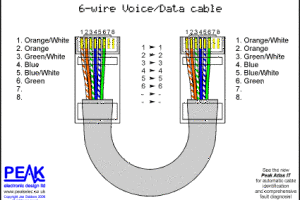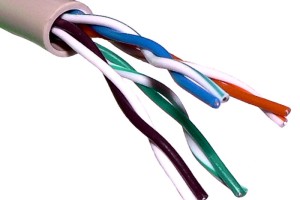Structured Cabling and WiFi
When first implemented, LANs (Local Area Networks) were built with physical connections. Cables capable of carrying image and information connected a group of computers in one area, on one floor or in one building. As technology has advanced, the functioning definition has shifted. Particularly with the onset and mainstream use of wireless technology, the way we deal with computer networks has changed, both at home and on the job. Some networks will always need to be wired physically, mainly for the degree of security this lends to delicate and important information. However, as more business is done online, and greater scope and bandwidth are required in the corporate world, more folks are turing to wireless solutions to power their work and their lives.
Wi Fi itself refers to a system of standardized and controlled devices, all of which are compatible and will connect you to the world wide web wirelessly. To assume this system requires absolutely no wiring, however, is false. Wireless hubs need to be connected to a larger network still, usually through cable (like the television) or telecom cable (like the phone.) The internet is then connected to a router which disperses a wireless signal that computers and wireless-capable devices pick up and connect to. Houses, offices, hotels, coffee shops and even churches are often set up with their very own wireless network, allowing people to connect to information with as little effort as possible.
Now, anyone who has actually used a wireless connection can tell you that they are far from perfect. When things go as planned, all the links in the wireless chain are hooked up securely and the signal is strong. Unfortunately, sometimes the router has to be restarted. Or the signal is not turned up high enough. Or too many people enter the same network at once and some individuals get kicked off. Worst case, you loose information in the drop-offs, or cannot stream a video soon enough to present it at a meeting. Businesses are particularly interested in seeking solutions to network issues, and will usually pay whatever is necessary to be able to depend on their wireless network. It has it’s pitfalls, but Wifi is the most current technology and admittedly has the greatest potential for functionality and ease in most settings. With proper installation and technical maintenance, it fulfills its potential.
Most personal residences, and many small businesses get their wireless connections from their local cable companies in a grouping of three: cable television, wireless internet, and land-line phone. This generally requires the installation of these systems into the building by a trained cabling technician, who runs cables to televisions and to wireless routers and turns on the signal. This creates a wireless hotspot that is generally password-protected so that the resident has control over who can participate in this mini-version of a LAN. Laptops no longer need to be hardwired to the internet to surf the web, but skilled cabling is still required to set up and run the wireless internet in your home or business. The application is different than in years past, but much of the structure is really the same.




